Thursday > Personal Study Essay Writing : Key image analysis
Friday > select / edit images for photo-book and coursework check
Thursday > Personal Study Essay Writing : Key image analysis
Friday > select / edit images for photo-book and coursework check
HERE IS A LINK TO: PLANNING-TRACKING-PERSONAL INVESTIGATION-AUTUMN-TERM-2018
It is important that we all have an understanding and interpretation of the term “political landscape” before we venture into un-ravelling how a range of influential photographers have tackled elements of this theme…
The theme for the 2018 Festival is Political Landscape. This has always been present throughout the history of photography. From the Crimean war battlefield photographs of Roger Fenton; Ansel Adams’ sublime American landscapes; the objective and conceptual typologies of Bernd and Hilla Becher’s industrial buildings; to the iconic pale blue dot, taken by Voyager 1. These historic landmarks and many more have helped develop the way photographers work with landscape.
You can clearly see in each of the contributing artist’s work how they have approached, embraced or integrated the theme…but we want you to now engage with the nature of the work itself and develop your knowledge and understanding.
Documentary photography tends to take place over an extended time. Some photographers will set a specific time-frame to what they are documenting and how they are documenting the event(s), happenings, locations and characters attached to the story or narrative.
Social documentary photography or concerned photography is the recording of how the world looks like, with a social and/or environmental focus. It is a form of documentary photography, with the aim to draw the public’s attention to ongoing social issues.
Usually, there is a point to this process. We may, as photographers, document how land is being used / abused, how land is passed down through generations of families, how land is protected, why land often has a spiritual connection to communities and society as a whole, how and why land physically changes to fit with political agendas and so on…

But you may be more interested in exploring creative and conceptual approaches to taking / making your images. Tableaux photography relies on setting up, staging and capturing scenes, events or incidents usually involving people.
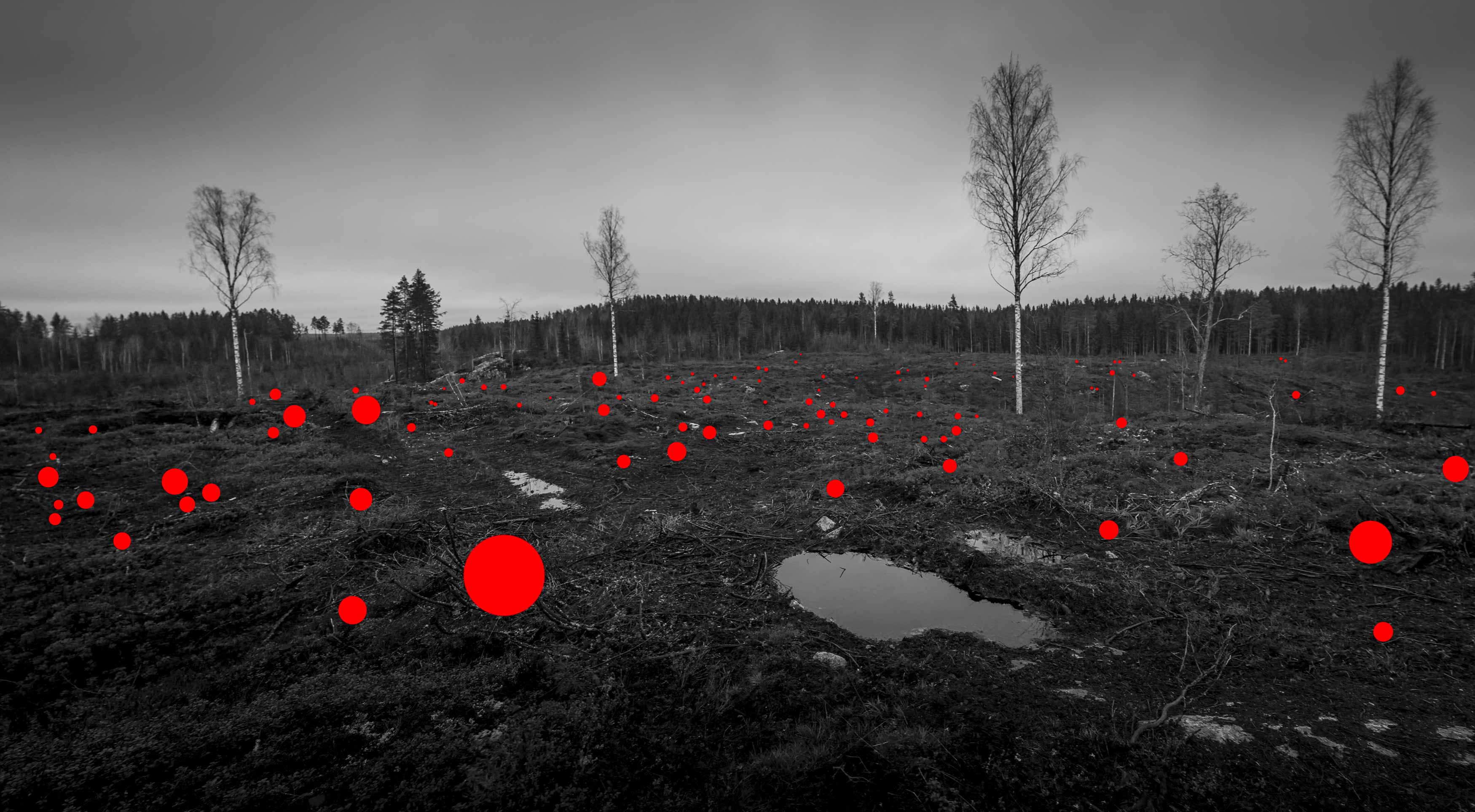
Archive driven / reliant work often stems from extensive research and even appropriation of pre-existing material including photographs, film, legal documents, transcripts, maps, plans, articles and more.
Valeria Cherchi has combined archival material with tableaux arrangements to explore a controversial and secretive program of vigilante action in Sardinia towards the end of last century in “Some of you killed Luisa”.
This should help YOU to formulate a plan for the practical element…
To successfully complete this task you must choose 2 of the options below to inspire your ideas…
…and create a set of blog posts that clearly demonstrate your ability to respond to the theme of Political Landscape. You may want to extend your ideas from the Future of St Helier…or embark on a new and different approach.
You may want to choose from the following prompts…
You must clearly outline your intentions and reasoning for your approach to the theme…define and de-construct what political landscape could be
You must devise and complete at least 1 x photo-shoot (min. 250 images)and produce a range of outcomes that are the result of careful and intelligent camera techniques, selection, editing and presentation methods.
Remember to analyse and evaluate your process carefully, using specialist vocabulary…

Useful articles to help you explore some recent / current examples of local starting points re : political landscape
Over the next week we would like you to…
Create 5 x examples of alternative layouts for your newspaper using Adobe InDesign and complete a visual blog post that clearly shows your decision making and design process.

CLICK HERE…
ATLANTUS PROJECT | MARTIN TOFT AND GARETH SYVRET
https://www.martintoft.com/atlantus/
Be careful with your choices…aim for impact and originality. Use your crops and edits from your Adobe Photoshop experiments.
for this…you should
Think carefully about how your images compliment each other, contrast against each other or flow as a sequence in a specific order.
2. Design pages / spreads that have a combination of
3. Finally…you must add a colour -coded motif (numbered by page) that indicates your team / zone somewhere in your design.
Use the map from our photo-shoot day in St Helier to help you with this…
Your idea could be a small dot in the corner, or incorporated within your image or page in another way. You can be inventive with this idea, but aim for consistency throughout your pages.
You can export Indesign pages as a PDF or JPEG…but also using screenshots is a great way to illustrate your design process and gives you opportunities to add annotations too…
Deadline for completion : Tuesday 17th July
Be brave…be bold…get creative and have fun!
Week 1 : Mon 11 June – Sun 17 June
| Week 1: 11 – 17 June Tuesday 12 June Societe Jersiaise – all day |
Presentations, inspirations and workshop on exploring St Helier and looking at narrative using images in the collection of Percival Dunham
| Tuesday 12 June Societe Jersiaise – all day |
Presentations, inspirations and workshop on exploring St Helier and looking at narrative using images in the collection of Percival Dunham.
Blog: Produce a number of blog post that illustrate your knowledge and understanding. Use images , video and references to hyperlinks from sources used
Photo-Archive
Dunham, Percy
Baudoux, Ernest
Smith, Albert
Henry Mullins
Archisle Contemporary Collection
Martin Parr (Liberation)
Michelle Sank (Insula)
Yury Toroptsov (Fairyland)
Tom Pope ( I am not Tom Pope, You are all Tom Pope)
Martin Toft ( Masterplan)
Lewis Bush
Click these links for access to the Photographic Archives
Search the archive activity 2018
Follow these steps:
Extension task: Select a second photographer from the Photo-Archive and a second contemporary photographer and follow the above instructions.
Deadline: Mon 17 June
A masterplan is a dynamic long-term planning document that provides a conceptual layout to guide future growth and development. Master planning is about making the connection between buildings, social settings, and their surrounding environments. A master plan includes analysis, recommendations, and proposals for a site’s population, economy, housing, transportation, community facilities, and land use. It is based on public input, surveys, planning initiatives, existing development, physical characteristics, and social and economic conditions.
https://urban-regeneration.worldbank.org/node/51
Link to official Masterplan for the development of the North of St Helier
https://www.gov.je/Government/Pages/StatesReports.aspx?ReportID=583
Linsk to Masterplan for the Esplanade Quarter.
https://www.gov.je/Government/Pages/StatesReports.aspx?reportid=137
Review of the current Masterplan of the Waterfront
Jersey Development Company (JDC) is owned by the States of Jersey. It is responsible for completing the development of the St Helier Waterfront and regenerating States owned property no longer required for the delivery of public services.
https://www.jerseydevelopment.je/
Website for the International Finance Centre Jersey that is under construction on the Esplanade
http://www.ifcjersey.je/about-ifc-jersey/
https://www.gov.je/PlanningBuilding/LawsRegs/IslandPlan/PlansFrameworks/pages/improvingsthelier.aspx
https://en.wikipedia.org/wiki/Saint_Helier
Here is a link to St Helier on Wikipedia which describes how the parish of is divided into 6 vingtaines for administrative purposes.
We have explored Psycho-geaography as a concept and way of working before…during the AS Landscape Project. Many of you succeeded in developing strong ideas by following some of the ideas.
Psycho-geography is a hybrid of photography and geography that emphasizes playfulness and “drifting” around urban environments. It has links to the Situationist International.
Psychogeography was defined in 1955 by Guy Debord as “the study of the precise laws and specific effects of the geographical environment, consciously organized or not, on the emotions and behavior of individuals.”
Another definition is “a whole toy box full of playful, inventive strategies for exploring cities… just about anything that takes pedestrians off their predictable paths and jolts them into a new awareness of the urban landscape.
The originator of what became known as unitary urbanism, psychogeography, and the dérive was Ivan Chtcheglov, in his highly influential 1953 essay “Formulaire pour un urbanisme nouveau” (“Formulary for a New Urbanism”).
It has roots in Dadaism and Surrealism.
The idea of urban wandering relates to the older concept of the flâneur, theorized by Charles Baudelaire…and is similar to STREET PHOTOGRAPHY
PETAPIXEL definition of PsychoGeography CLICK HERE

Sohei Nishino : Diorama Maps
https://www.lensculture.com/articles/sohei-nishino-diorama-city-maps
Noemie Goudal : Nature vs Culture

Marcus Desieno creates de-humanised landscape photography by hacking surveillance camera networks…but avoids privacy problems normally associated with urban and residential areas…
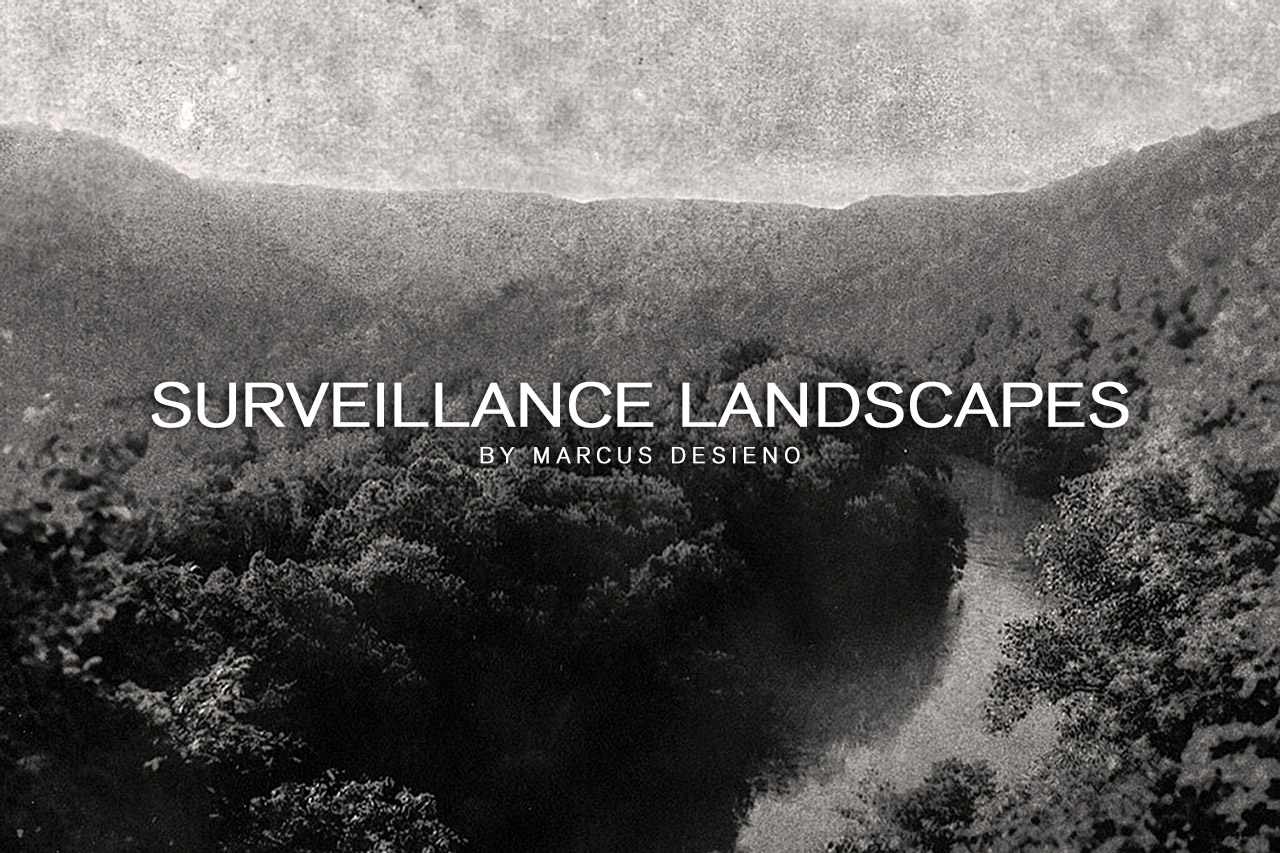
Letha Wilson : Merging shape and landscape

The Boyle Family : The ground we walk on

http://www.boylefamily.co.uk/boyle/about/index.html
Thom and Beth Atkinson : Scarred buildings
Missing Buildings: Thom and Beth Atkinson document the scars left on London by the Blitz
Mishka Henner : Aerial Imagery in the digital age

Luke Fowler: Two-Frame Film | Juxtapostions
http://www.photopedagogy.com/two-frame-films.html
Stephen Gill : “in-camera photograms”

https://www.lensculture.com/articles/stephen-gill-outside-in
Joel Sternfeld: documenting the place and the people

https://www.joelsternfeld.net/artworks/2018/3/25/walking-the-high-line
John Bulmer: Working Class environments
Peter Mitchell: re-visiting locations throughout the years
http://www.bjp-online.com/2018/01/peter-mitchell-viking-4/
Typology means the study and interpretation of types and became associated with photography through the work of Bernd and Hilla Becher, whose photographs taken over the course of 50 years of industrial structures; water towers, grain elevators, blast furnaces etc can be considered conceptual art. They were interested in the basic forms of these architectural structures and referred to them as ‘Anonyme Skulpturen’ (Anonymous Sculptures.)
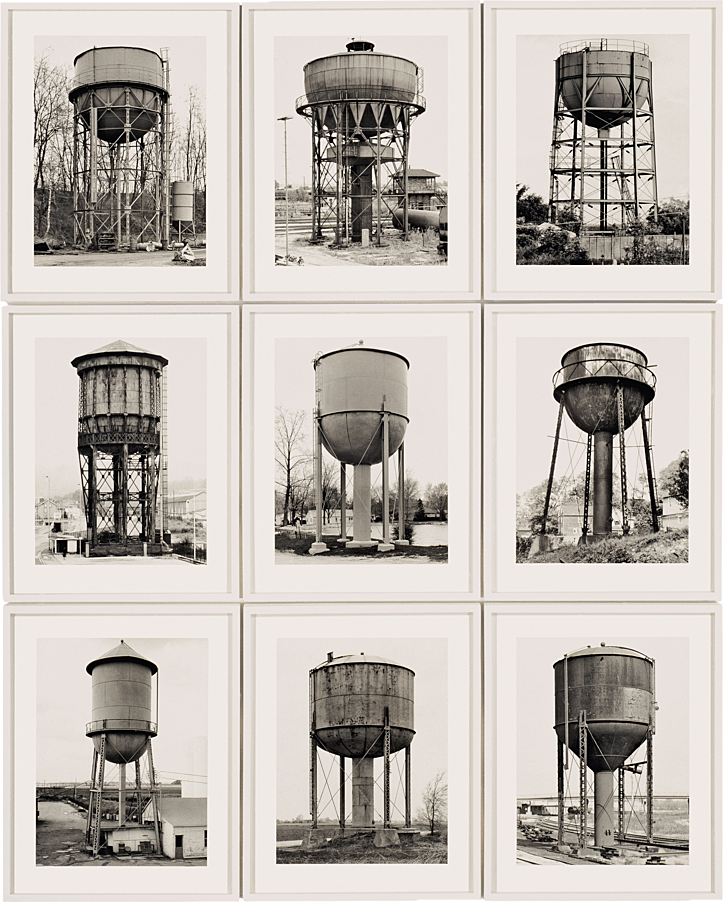
The Becher’s were influenced by the work of earlier German photographers linked to the New Objectivity movement of the 1920s such as August Sander, Karl Blossfeldt and Albert-Renger-Patzsch.
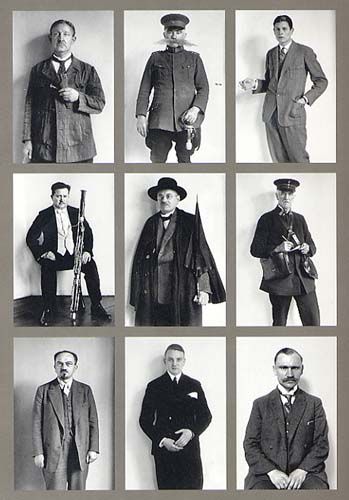


See also the work by Americans, William Christenberry and Ed Ruscha’s photographic works on types e.g. Twentysix Gasoline Stations (1964). Every building on the Sunset Strip (1966). Or Idris Khan‘s appropriation of Bechers’ images.




See previous blog post for more guidelines and a photo-assignment.
Not least of the Bechers’ legacy is their lasting influence on subsequent generations of artists who use the photographic medium today, most notably the students taught by Bernd Becher at the Düsseldorf Art Academy between 1976 and 1996. Among his most renowned students are Andreas Gursky, Candida Höfer, Thomas Ruff, and Thomas Struth.




From Germany, apart form the legacy of the Dusseldorf Kunst Akademie headed by the Becher’s another school of photography, the Werkstatt für Fotografie (Workshop for Photography) was founded in Berlin by Michael Schmidt who invited several leading American photographers, including William Eggleston and John Gossage, to teach there.

Responding to the wall between East and West in Berlin Schmidt produced a seminal work, Waffenrufe. Another body of work Berlin Nach 45 show empty streets of East Berlin made in the early hours as a quite testament to post war German architecture and urban city planning
Conceptual approaches to natural/ man-made environments
Tanja Deman is a Croation artist who was Archisle’s International Photographer-in-Residence in 2017.
Her art is inspired by her interest in the perception of space, physical and emotional connection to a place and her relationship to nature. Her works, incorporating photography, collage, video and public art, are evocative meditations on urban space and landscape. Observing recently built legacy or natural sites her work investigates the sociology of space and reflects dynamics hidden under the surface of both the built and natural environment.

Fernweh series explores the concept of a modernist city through its extreme relations to the landscape. The images are placed on a blurred line between a past which reminds us of a future and a future which looks like a past. Scenes are referring to the modernist ideas and aspiration of a man conquering the natural wild land and subordinating it to the rational order, and the consequences of those aspirations, which switched into the longing for an escape from urban environments.

Collective Narratives is a series staging a moment of contemplation of nature and built environment. Natural spectacles, framed in theatrical space are contemplated by an audience. These constructed images consolidate: geological formations; a projection of an urban environment; an arena; a deep chasm; a theatre and a crumbling slag-heap through a very active kind of watching.
While making the series ‘Collective Narratives’ I was interested in different types of spectatorship and architectural settings in which they are taking place. Moreover, the notion of a ritual in which a large group of people gathers and participates in order to experience something together by observing, intrigued me. I see these spaces for cultural and sports spectacles, as zones of pure potential, where the world must be rebuilt or re-imagined every time they are in use. Having liberated them from their utilitarian, commercial restrains, and the environments in which they were created, I allow them to cross the boundary of reality.
Together these scenes examine time and the strange modes of spectatorship attached to the inanimate world. A collective witnessing of phenomena that are usually experienced in private atmospheres.
Staged / Constructed Environments
Land art is art that is made directly in the landscape, sculpting the land itself into earthworks or making structures in the landscape using natural materials such as rocks or twigs

Land art was part of the wider conceptual art movement in the 1960s and 1970s. The most famous land art work is Robert Smithson’s Spiral Jetty of 1970, an earthwork built out into the Great Salt Lake in the USA. Though some artists such as Smithson used mechanical earth-moving equipment to make their artworks, other artists made minimal and temporary interventions in the landscape such as Richard Long who simply walked up and down until he had made a mark in the earth.

Land art, which is also known as earth art, was usually documented in artworks using photographs and maps which the artist could exhibit in a gallery. Land artists also made land art in the gallery by bringing in material from the landscape and using it to create installations.

As well as Richard Long and Robert Smithson, key land artists include Hamish Fulton, Walter de Maria, Michael Heizer, Dennis Oppenheim and Christo and Jeanne-Claude
Hamish Fulton (born 1946) is a British walking artist. Since 1972 he has only made works based on the experience of walks.

Read more here on Tate Online Resources
William Christenberry making typological studies of vernacular architecture traditional to the deep American South.
Christenberry also made little sculptures or 3D models of some of the buildings he had photographed
Photography and sculpture
Photographic installations which are site specific and 3-dimensional is very in vogue right now. In the exam paper starting point 4 is about artists exploring the material nature of a photographic image and the idea that photographs can be sculptural. Here are a few artists to explore
Felicity Hammond is an emerging artist who works across photography and installation. Fascinated by political contradictions within the urban landscape her work explores construction sites and obsolete built environments.



In specific works Hammond photographs digitally manipulated images from property developers’ billboards and brochures and prints them directly onto acrylic sheets which are then manipulated into unique sculptural objects. http://www.felicityhammond.com/
Lorenzo Venturi: Dalston Anatomy
Lorenzo Vitturi’s vibrant still lifes capture the threatened spirit of Dalston’s Ridley Road Market. Vitturi – who lives locally – feels compelled to capture its distinctive nature before it is gentrified beyond recognition. Vitturi arranges found objects and photographs them against backdrops of discarded market materials, in dynamic compositions. These are combined with street scenes and portraits of local characters to create a unique portrait of a soon to be extinct way of life.
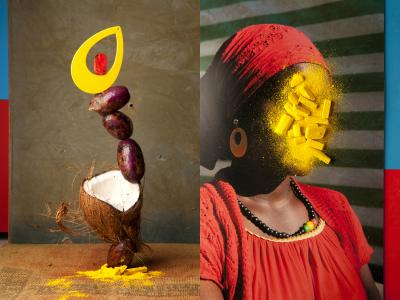

His installation at the Gallery draws on the temporary structures of the market using raw materials, sculptural forms and photographs to explore ideas about creation, consumption and preservation.
Watch our exclusive interview with Lorenzo.
Lorenzo Vetturi
http://www.lorenzovitturi.com/
Mishka Henner, Trevor Paglen, Doug Rickard, Daniel Mayrit all use found images from the internet, Google earth and other satellites images as a way to ask questions and raise awareness about our environment, state operated security facilities, social and urban neighbour hoods, prostitution, and London’s business leaders of major international financial institutions.

US oil fields photographed by satellites orbiting Earth.

Mishka Henner: I’m not the only one, 2015
Single channel video, 4:34 mins
Photographer Trevor Paglen has long made the advanced technology of global surveillance and military weaponry his subject. This year he has been nominated for the prestigious The Deutsche Börse Photography Foundation Prize which aims to reward a contemporary photographer of any nationality, who has made the most significant contribution (exhibition or publication) to the medium of photography in Europe in the previous year. The Prize showcases new talents and highlights the best of international photography practice. It is one of the most prestigious prizes in the world of photography. Read more here

Doug Rickard is a north American artist / photographer. He uses technologies such as Google Street View and YouTube to find images, which he then photographs on his monitor, to create series of work that have been published in books, exhibited in galleries.
Months after the London Riots in 2008 (at the beginning of the economical crash) the Metropolitan Police handed out leaflets depicting youngsters that presumably took part in riots. Images of very low quality, almost amateur, were embedded with unquestioned authority due both to the device used for taking the photographs and to the institution distributing those images. But in reality, what do we actually know about these people? We have no context or explanation of the facts, but we almost inadvertently assume their guilt because they have been ‘caught on CCTV’.
In his awarding book: You Haven’s Seen the Faces.. Daniel Mayrit appropriated the characteristics of surveillance technology using Facebook and Google to collect images of the 100 most powerful people in the City of London (according to the annual report by Square Mile magazine in 2013). The people here featured represent a sector which is arguably regarded in the collective perception as highly responsible for the current economic situation, but nevertheless still live in a comfortable anonymity, away from public scrutiny.
Read article here in the BJP on Shooting the Rich
Read and see more here on his website and the publisher, RIOT Books
See also this book Looters by Tiane Doan Na Champassak
Another Kind of Life: Photography on the Margins
At a time of significant national and global uncertainty, the season in 2018 at the Barbican Art Gallery in London explore how artists respond to, reflect and potentially effect change in the social and political landscape.
Reflecting a diverse, complex and authentic view of the world, the exhibition touches on themes of countercultures, subcultures and minorities of all kinds, the show features the work of 20 photographers from the 1950s to the present day. Diane Arbus, Casa Susanna, Philippe Chancel, Larry Clark, Bruce Davidson, Mary Ellen Mark, Paz Errázuriz, Jim Goldberg, Katy Grannan, Pieter Hugo, Seiji Kurata, Danny Lyon, Teresa Margolles, Boris Mikhailov, Daido Moriyama, Igor Palmin, Walter Pfeiffer, Dayanita Singh Alec Soth and Chris Steele-Perkins
Read Press Release here
Paz Errázuriz The beautifully arresting series of photographs, Adam’s Apple (1982-87), by Chilean photographer Paz Errázuriz are of a community of transgender sex-workers working in an underground brothel in Chile in the 1980s. Taken during the military dictatorship of General Augusto Pinochet when gender non-conforming people were regularly subjected to curfews, persecutions and police brutality, the photographs are a collaborative and defiant act of political resistance.

 Read review here in Dazed and Confused and a gallery page in the Guardian
Read review here in Dazed and Confused and a gallery page in the Guardian
Lewis Bush: Archisle Photographer-in-Residence 2018 is a Photographer, Writer, Curator and Educator based in London. After studying History and working as a researcher for the United Nations Taskforce on HIV/AIDS he completed a MA in Documentary Photography at the London College of Communication in 2012. Since then he has developed a multifaceted practice encompassing photography, writing and curation to explore ideas about the way power is created and exercised in the world. In The Memory of History (2012) he travelled through ten European countries documenting the way the past was being manipulated in the context of the economic crisis and recession. This project was widely published and was exhibited at the European Union’s permanent representation in London in 2014. More recent works include Metropole (2015) which critiques the architectural transformation of London and the city’s growing inequality by subverting the imagery of London’s luxury and corporate developments. Bush’s new book Shadows of the State (2018) uses open source research to reveal numbers stations, cold war intelligence communications which remain in use today. Bush is a Lecturer on the MA and BA(hons) Documentary Photography Programmes at London College of Communication.




Read Lewis Bush blog Disphotic here
City and abstraction:
Aaron Siskind
Ernst Haas
Saul Leiter
Street Photography:
Beat Streuli
Canon of american street photography Walker Evans and his project Labour Anonymous Robert Frank Lee Friedlander Gary Winogrand Diane Arbus William Eggleston Stephen Shore
Jim Goldberg
Eamon Doyle: trilogy from Dublin
The City at Night:
Rut Blees Luxembourg
Maciej Dakowicz: Cardiff at Night
Todd Hido
Saul Leiter
Daniel
Last year Tom Pope came to Jersey for a 6 month residency with Archisle in the Photographic Archive of the Société Jersiaise, Jersey and produced an exhibition and installation I Am Not Tom Pope, You Are All Tom Pope featuring a number of diverse and new work incorporating elements of photography, performance, video and sculpture. Go to his website to see examples of his unique work. Here are some of the key concepts that underpin’s his work and practice:
Performance, Photography, Chance, Humour/Fun, Repetition
Play, Psychogeography, dérive (drifting), Situationism, Dadaism
Public/Private, Challenging authority, Failure, DIY/Ad-hoc approach, Collaboration, Audience participation
Here are a list of other artists/ photographers that has influenced Tom Pope’s work and that may inspire you: Vito Acconci, John Baldessari, Yves Klein, Bas Jan Ader, Erwin Wurm, Chris Arnatt, Richard Long, Hamish Fulton, Joseph Beuys, Chris Burden, Francis Alÿs, , Sophie Calle , Nikki S Lee, Claude Cahun, Dennis Oppenheim, Bruce Nauman, Allan Kaprow, Mark Wallinger, Gillian Wearing, Sam Taylor-Johnson, Steve McQueen, Marcel Duchamp and the Readymade, Andy Warhol’s film work, Marina Abramovic, Pipilotti Rist, Luis Bunuel/ Salvatore Dali: , Le Chien Andalou, Dziga Vertov: The Man with a Movie Camera
Homework Assignment 1
Contextual Studies : Research
Homework Assignment 2
Night Shoot : St Helier
Homework Assignment 3
Provoke : Japan
Homework Assignment 4
Looking at Photo-Book / Zine Design
Homework Assignment 5
Presentation methods
Good Morning
I will not be in school today due to illness : so here goes with a few reminders and prompts
(PS : do not worry about exam clashes…we are aware of them and can work around them)
Dates and rooms
12A / Monday 14th May + Wednesday 16 May
Room : Photog 1
12B / Monday 14th May + Wednesday 16 May
Room : Media / ICT
12C / Tuesday 15th May + Thursday 17th May
Room : Photog 1
12D / Tuesday 15th May + Thursday 17th May
Room : Media / ICT
will be partly out of use for 2 weeks…23rd April – 4th May inclusive….you must be prepared for this, bring in your laptops and use alternative ICT Rooms. This is due to A2 Photog Exams in both rooms.
JAC will book these for you and email details closer to the dates.
You may not have a teacher available so be prepared to work independently towards your final outcomes…
Tuesday 8th May 2018 9am…Mr Cole be uploading all print files to our printer for ordering.
MR COLE AND MISS HEARN MUST CHECK YOUR CHOICES AND AGREE TO THEM BEFORE PRINTING
Your finish school for STUDY LEAVE on Friday 4th May…our advice to you is to make sure you have the prints ready in the print folder by the end of this day so you do not forget!
Your only other option is to print your own images…but you must have images ready for the exam date itself.
Thursday 29th March NOW EXTENDED TO TUESDAY 17TH APRIL !!!
Assessment Objectives
You should provide evidence that fulfils the four Assessment Objectives:
AO1 Develop ideas through sustained and focused investigations informed by contextual
and other sources, demonstrating analytical and critical understanding
AO2 Explore and select appropriate resources, media, materials, techniques and
processes, reviewing and refining ideas as work develops
AO3 Record ideas, observations and insights relevant to intentions, reflecting critically on work and progress
AO4 Present a personal and meaningful response that realises intentions and, where appropriate, makes connections between visual and other elements.
Assessment Objectives
You should provide evidence that fulfils the four Assessment Objectives:
AO1 Develop ideas through sustained and focused investigations informed by contextual
and other sources, demonstrating analytical and critical understanding
AO2 Explore and select appropriate resources, media, materials, techniques and
processes, reviewing and refining ideas as work develops
AO3 Record ideas, observations and insights relevant to intentions, reflecting critically on work and progress
AO4 Present a personal and meaningful response that realises intentions and, where appropriate, makes connections between visual and other elements.
Here are some other suggestions that may stimulate your imagination:
• rules, rituals, etiquette, procedures, conformity, oppression
• masks, disguises, camouflage, costumes
• oceans, forests, caves, smog, night
• hieroglyphs, codes, Braille, runes, fonts
• single-celled organisms, parasites, cocoons, shells, dens
• the Underground, tunnels, cracks, catacombs
• magic, theatre, espionage, Bletchley Park
• lies, deceit, tragedy, romance
• exploration, discovery, archaeology, metal detecting
• science, knowledge, astronomy, space exploration
• diving, caving, orienteering, cellars
• hide and seek, pass the parcel, gambling dice
Theme: SECRETS, CODES AND CONVENTIONS
Title: 8PY0/02 Photography
1.
The group photo has powerful underlying conventions, whether a family portrait or of a gathering of friends. These reflect codes of behaviour that shift over time. In the early 1990s Paul M Smith explored the convention of the ‘team photo’ and the ‘night
out’ – photographs so often taken by groups of ‘lads’, which he took to be anything but spontaneous.

Paul M Smith Make My Night
Trish Morrissey gently subverted the ritual of the family holiday photo in her 2005-7 series of photographs called Front, often swapping clothes and taking on the role of the mother in semi- formal gatherings staged on beaches in Britain and Australia.
Elaine Constantine is a photographer and film-maker. Her film “Northern Soul” depicts how a generation of teenagers from gritty, northern towns in England became fixated with black soul music. The two groups of people are contrasting…but somehow fused together.
As a pioneer of the vibrant, documentary-inspired approach to fashion photography in the 1990s and early 2000s Constantine was a regular contributor to The Face, Italian Vogue and US Vogue.
Many photographers have explored the notion of fringe groups, alternatives, non-conformists, sub-cultures, anarchists etc…everything from biker gangs to surfers, trainspotters to religious groups.
Many documentary photographers have explored sub-cultures, and have recorded their often unconventional lifestyles over a period of time eg Danny Lyons, Larry Clark, Mary Ellen Mark, Chris Killip, John Bulmer and Martin Parr.
http://www.industryart.com/artists/elaineconstantine/northernsoul
https://www.theguardian.com/film/video/2014/sep/10/northern-soul-trailer-video
Tom Wood, Brassaї and Malick Sidibé have explored similar territory, recording social gatherings. Diane Arbus, Sally Mann and Nikki S. Lee have taken photographs that challenge and question the normal conventions of such images.

Trish Morrissey
Sylvia Westbrook, August 2nd, 2005
Theme: SECRETS, CODES AND CONVENTIONS
Title: 8PY0/02 Photography
2.
In The Road to Mecca, Maha Malluh mixes signs, symbols and conventions from the present and the past to illustrate the modern experience of the Hajj or journey to Mecca. She uses her children’s toys and the design of the Kiswa as a background, visually unified
by the darkroom process of photograms.
There are clear Tableaux opportunities here…or even possibilities to explore film making, animation, time lapse or DIORAMAs.
Many contemporary photographers, such as Garry Fabian Miller, Susan Derges and
Adam Fuss, mix conventions and visual codes. Isa Genzken challenges expectations of traditional photographs in her work, by combining photography and sculpture. These pieces are influenced in part by Rauschenberg’s Combines and Peter Blake’s paintings.

Maha Malluh
Hajj : The Road to Mecca
Theme: SECRETS, CODES AND CONVENTIONS
Title: 8PY0/02 Photography
3.
Places and objects hold secrets and tell stories. Eugene Atgèt was one of the first photographers to sense the passage of time and a melancholy presence in the quiet backstreets of Paris. Paul Seawright, Simon Norfolk, Donovan Wylie and Willie Doherty record places that bear secret histories or subtle evidence of conflict.

Donovan Wylie MAZE Prison 2007 / 8
In her series Mothers and Frida, the Japanese photographer Ishiuchi Miyako took pictures of the secret history imbued in the possessions left behind after a person’s death. Her work shows a continuing obsession with the traces we leave behind, both as individuals
and as a society.

Ishiuchi Miyako
Frida Kahlo’s corset
Theme: SECRETS, CODES AND CONVENTIONS
Title: 8PY0/02 Photography
4.
The photographer Diane Arbus wrote ‘A picture is a secret about a secret. The more it tells you the less you know.’ This could equally refer to Maya Deren’s and Alexander Hackenschmied’s 1943 film Meshes of the Afternoon, which used innovative techniques
such as slow motion, repetition and jump cuts to build a sense of a dream interacting with reality. In the film objects seem to have a mysterious and secret significance, known only to the dreamer.
The film’s narrative is circular and repeats several motifs, including a flower on a long driveway, a key falling, a door unlocked, a knife in a loaf of bread, a mysterious Grim Reaper–like cloaked figure with a mirror for a face, a phone off the hook and an ocean. Through creative editing, distinct camera angles, and slow motion, the surrealist film depicts a world in which it is more and more difficult to catch reality.
It has influenced other filmmakers such as David Lynch in
Twin Peaks but was no doubt influenced by Soviet film maker Sergei Eisenstein’s Battleship Potemkin.
The film contains various codes, symbols and metaphors…and makes use of MONTAGE…juxtaposing clashing or contrasting imagery like this…
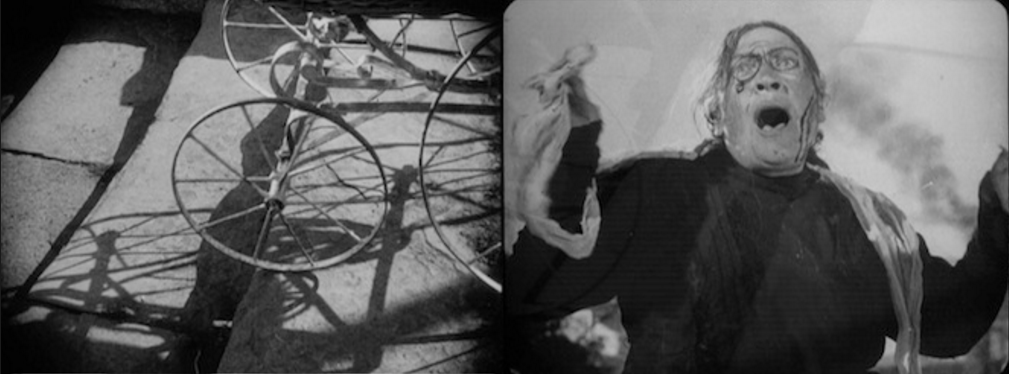
Luke Fowler employs this concept effectively in his diptychs…
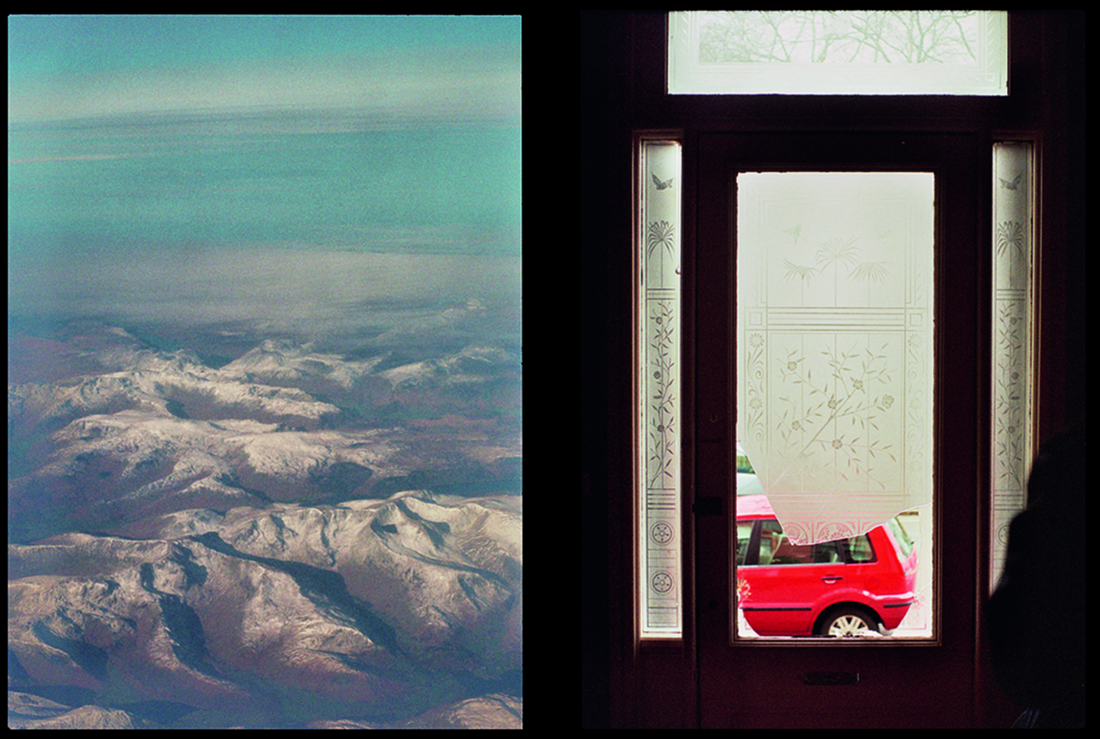
Dreams and surreal imagery have also inspired other photographers and filmmakers such as Jerry Uelsmann, Madame Yevonde, Lara Zankoul, Wes Anderson and Matthew Barney.
You could re-interpret a well know fairy tale or moral, as Tim Walker often does in his work and explore the conventions of story telling and narrative
Look at Mari Mahr, Sophie Calle, and Claude Cahun (Jersey Link).
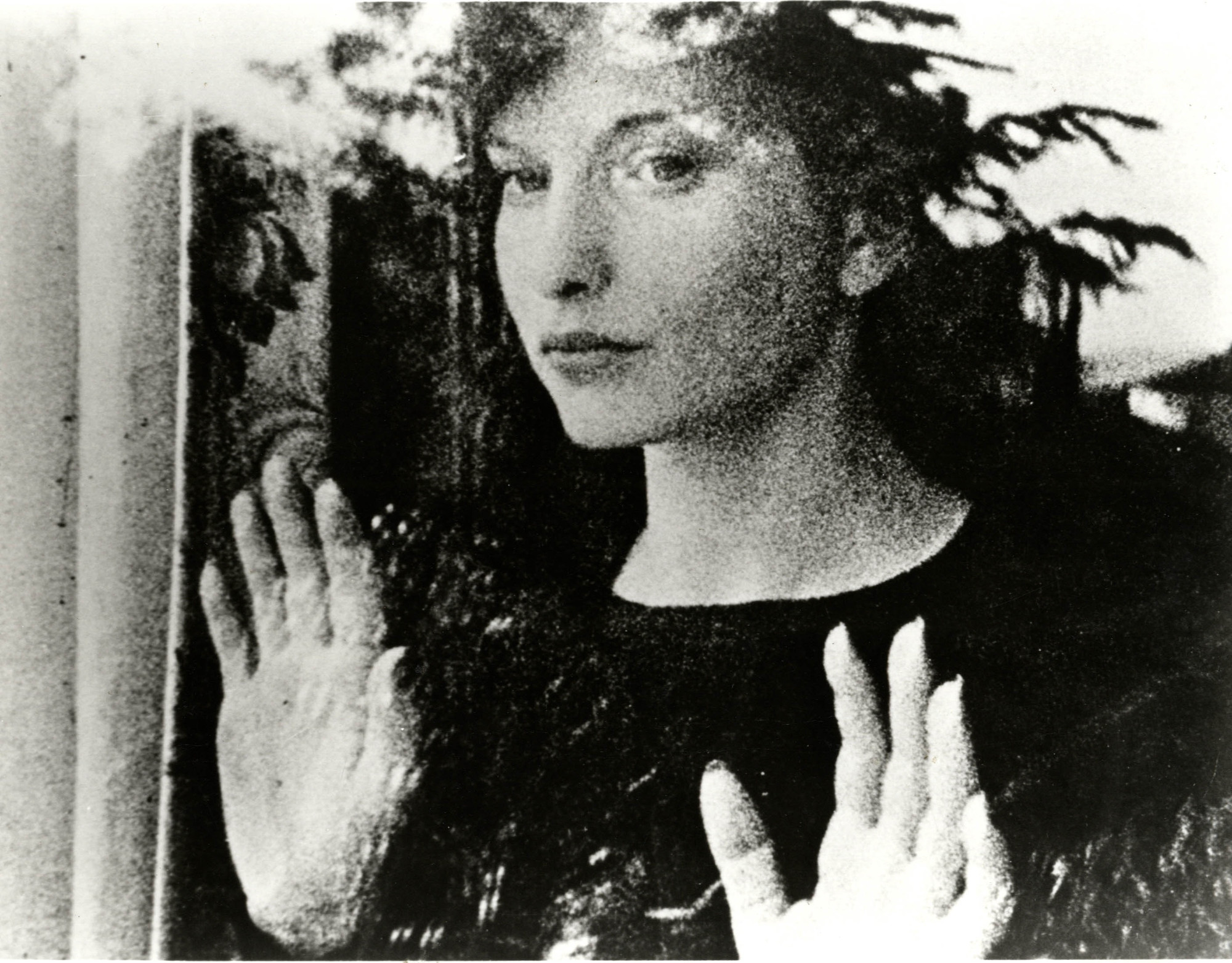
Still from Meshes of the Afternoon
Maya Deren and Alexander Hackenschmied
You must look carefully at the examples given above by researching and reading…comparing and contrasting as you move through the options.
Watch the suggested film clips…and be prepared to explore your ideas in a range of media and then create a set of blog posts that develop the process…
Until the mid-twentieth century, documentary photography was a vital way of bearing witness to world events: from shoot-from-the-hip photographs of the Spanish Civil War by Robert Capa to the considered portraits of poor farmers by Dorothea Lange.
Documentary photography generally relates to longer term projects with a more complex story line, while photojournalism concerns more breaking news stories. The two approaches often overlap. Some theorists argue that photojournalism, with its close relationship to the news media, is influenced to a greater degree than documentary photography by the need to entertain audiences and even market products.
Learn : There are various codes and conventions within the boundaries of documentary photography and photojournalism…
Your next task is to find out how these codes and conventions are adhered to, but also how they are often ignored or exploited
Why?
How?
And of course…how can you respond to this in a practical and meaningful way whilst either adhering to the codes and conventions, or subverting them?
https://petapixel.com/2018/03/06/make-bw-photo-print-darkroom-7-minute-crash-course/

Over the coming weeks you must now produce your final mini-unit that clearly demonstrates your knowledge, understanding and practical application of landscape photography…
YOUR FINAL BLOG POST SHOULD CLEARLY SHOW 3-5 POSSIBLE FINAL OUTCOMES, INCLUDING YOUR PRESENTATION METHOD
FROM THIS YOU CAN CHOOSE YOUR IMAGES FOR PRINTING
Research and explore alternative approaches to presenting your final images. This should be an integral part of your concept…not a gimmick…ultimately, the quality of your photography will be the primary focus and your mark will reflect this…










Print Deadline : Tuesday 20th February
Find the folder : M:\Departments\Photography\Students\Image Transfer\PRINTING
The four assessment objectives clearly outline expectations, so you must provide high quality evidence for each AO…
AO1 : Develop ideas through sustained and focused investigations, informed by contextual sources, demonstrating analytical and critical understanding
AO2 : Explore and select appropriate resources, media, techniques and processes, reviewing and refining ideas as work develops
AO3 : Recording ideas (taking photos) that are relevant to intentions, reflecting critically on work as it progresses
AO4 : Present a personal and meaningful response(s) that realises intentions, and makes connections with other artists
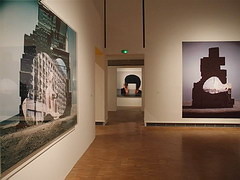
A01 : Develop Ideas
A02 : Explore Ideas
A03 : Record Ideas
AO4 : Present Ideas
In the exam you will be…
Oliver Stockwell Landscape Photography AS (A grade)
Adam Seal Landscape Photography AS (A grade)
Charlotte Dance Landscape Photography AS (A grade)
Lauryn Sutcliffe Landscape Photography AS (A grade)
Maddie Lee Landscape Photography AS (A grade)